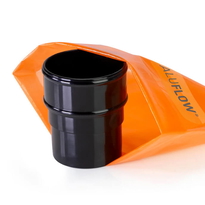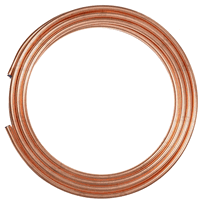Pipe And Pipe Fittings
Similar Categories
Pipe And Pipe Fittings: A Guide to Choosing the Right Ones for Your Project
If you are planning to install or repair a plumbing system, you will need to know about pipe and pipe fittings. Pipe and pipe fittings are the essential components that connect different parts of the plumbing system and allow water or gas to flow through them. Pipe and pipe fittings come in various shapes, sizes, materials, and functions, so it can be confusing to choose the right ones for your project.
In this article, we will guide you through the basics of pipe and pipe fittings, and help you select the best ones for your needs.
What are Pipe and Pipe Fittings?
Pipe and pipe fittings are the terms used to describe the parts of a plumbing system that transport fluids or gases from one point to another. A pipe is a hollow cylindrical tube that carries the fluid or gas, while a pipe fitting is a device that connects two or more pipes, changes the direction of the flow, or regulates the pressure or flow rate of the fluid or gas.
Pipe and pipe fittings can also be used to create branches, joints, or valves in the plumbing system.
What are the Different Types of Pipe and Pipe Fittings?
 There are many types of pipe and pipe fittings available in the market, each with its own advantages and disadvantages. Some of the common types are:
There are many types of pipe and pipe fittings available in the market, each with its own advantages and disadvantages. Some of the common types are:
- Copper pipe and fittings: Copper is one of the most popular materials for pipe and pipe fittings, especially for water supply lines. Copper is durable, corrosion-resistant, easy to bend and solder, and has a high thermal conductivity. However, copper is also expensive, prone to theft, and may react with acidic water or certain chemicals.
- PVC pipe and fittings: PVC stands for polyvinyl chloride, a plastic material that is widely used for drain, waste, and vent pipes. PVC is cheap, lightweight, easy to cut and glue, and resistant to corrosion and chemicals. However, PVC is not suitable for hot water or high-pressure applications and may degrade under sunlight or high temperatures.
- PEX pipe and fittings: PEX stands for cross-linked polyethene, a flexible plastic material that is becoming more popular for water supply lines. PEX is resistant to corrosion, freezing, and scaling, and can be easily installed using push-fit or crimp connections. However, PEX is not compatible with some metal fittings and may be damaged by rodents or UV rays.
- Galvanized steel pipe and fittings: Galvanized steel is steel that has been coated with zinc to prevent rusting. Galvanised steel is strong, durable, and suitable for high-pressure applications. However, galvanized steel is also heavy, difficult to cut and thread, and may corrode over time, causing leaks or clogs.
- Cast iron pipe and fittings: Cast iron is an iron alloy that is used for drain, waste, and vent pipes. Cast iron is strong, long-lasting, and resistant to fire and noise. However, cast iron is also heavy, brittle, and prone to cracking or rusting.
How to Choose the Right Pipe and Pipe Fittings for Your Project?
Choosing the right pipe and pipe fittings for your project depends on several factors, such as:
- The purpose of the pipe: Different pipes have different functions, such as supplying water, draining waste, or venting air. You should choose the pipe that matches the purpose of your project and meets the codes and standards of your area.
- The size of the pipe: The size of the pipe is measured by its diameter, which determines the amount of fluid or gas that can flow through it. You should choose the pipe that has the appropriate diameter for your project and matches the size of the existing pipes or fittings that you want to connect to.
- The material of the pipe: The material of the pipe affects its durability, performance, and cost. You should choose the pipe that is compatible with the type of fluid or gas that you want to transport, and the environmental conditions that the pipe will be exposed to.
- The type of connection: The type of connection refers to how the pipe and pipe fittings are joined together, such as by soldering, glueing, threading, or crimping. You should choose the type of connection that is easy to install, secure, and leak-proof.
What are Some of the Products that You Can Buy from Buy Insulation Online?
 If you are looking for high-quality pipe and pipe fittings for your project, you can buy them from our website Buy Insulation Online, we are the leading online supplier of insulation and building materials in the UK. Some of the products that you can buy from Buy Insulation Online are:
If you are looking for high-quality pipe and pipe fittings for your project, you can buy them from our website Buy Insulation Online, we are the leading online supplier of insulation and building materials in the UK. Some of the products that you can buy from Buy Insulation Online are:
- 12mm Underfloor Heating Pipe: This is a flexible and durable pipe that is specially designed for underfloor heating systems. It is made of cross-linked polyethene (PEX) and has an oxygen barrier layer to prevent corrosion. It can withstand temperatures up to 95°C and pressures up to 6 bar. You can buy this pipe in lengths of 100m, 200m, or 300m from Buy Insulation Online here.
- 16mm Underfloor Heating Pipe: This is another flexible and durable pipe that is suitable for underfloor heating systems. It is also made of cross-linked polyethene (PEX) and has an oxygen barrier layer to prevent corrosion. It can withstand temperatures up to 95°C and pressures up to 6 bar. You can buy this pipe in lengths of 100m, 200m, or 300m from Buy Insulation Online here.
- Polypipe 15mm Underfloor Heating Pipe: This high-performance pipe is ideal for underfloor heating systems. It is made of polybutylene (PB) and has a five-layer construction that provides strength, flexibility, and durability. It can withstand temperatures up to 95°C and pressures up to 12 bar. You can buy this pipe in lengths of 80m, 120m, or 240m from Buy Insulation Online here.
Conclusion
Pipe and pipe fittings are the essential components that connect different parts of the plumbing system and allow water or gas to flow through them. Pipe and pipe fittings come in various shapes, sizes, materials, and functions, so it can be confusing to choose the right ones for your project. In this article, we have guided you through the basics of pipe and pipe fittings and helped you select the best ones for your needs.
We have also introduced you to some of the products that you can buy from Buy Insulation Online, we are the leading online supplier of insulation and building materials in the UK. If you have any questions or need any assistance, please feel free to contact us at Buy Insulation Online. We are always happy to help you with your project.
Frequently Asked Questions
Q: What are the different types of pipe fittings available for plumbing?
A: There are various types of pipe fittings used in plumbing, including elbows, tees, connectors, caps, and adaptors, which have different applications and are used to connect, terminate, or control the flow in a plumbing system.
Q: How do I choose the right pipe and fittings for my project?
A: When choosing pipes and fittings for your project, it's essential to consider factors such as the application, pipe materials, and the specific needs of your plumbing system. You should also consider the compatibility of the fittings with the pipes, as well as the material and brand preferences.
Q: What are compression fittings, and when are they used in plumbing?
A: Compression fittings are used to connect two pipes or tubes together using a compression ring and a nut. They are commonly used in plumbing installations where a strong, leak-proof connection is required, such as in central heating systems and isolation valves.
Q: Which materials are commonly used to make pipe fittings?
A: Pipe fittings are available in various materials, including copper, brass, stainless steel, and plastic. Each material has its own advantages and is chosen based on factors such as the type of piping system, the application, and the required durability.
Q: What are the key factors to consider when buying pipe fittings?
A: When purchasing pipe fittings, it's important to consider factors such as the type and size of the fitting required, the material and brand preferences, as well as any specific features needed for your plumbing system. Additionally, considering factors such as delivery options and a wide product range can be beneficial.







































































































































































































































































































































































